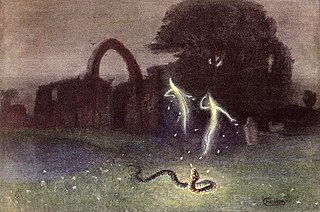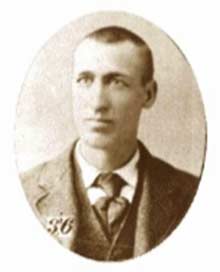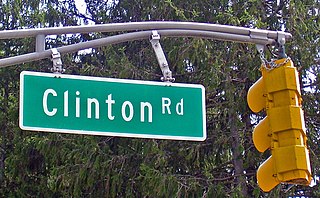Related Research Articles

In folklore, a will-o'-the-wisp, will-o'-wisp, or ignis fatuus, is an atmospheric ghost light seen by travellers at night, especially over bogs, swamps or marshes. The phenomenon is known in much of European folklore by a variety of names, including jack-o'-lantern, friar's lantern, and hinkypunk, and is said to mislead travellers by resembling a flickering lamp or lantern. In literature, will-o'-the-wisp metaphorically refers to a hope or goal that leads one on, but is impossible to reach, or something one finds strange or sinister. Wills-o'-the-wisp appear in folk tales and traditional legends of numerous countries and cultures; notable named examples include St. Louis Light in Saskatchewan, the Spooklight in Southwestern Missouri and Northeastern Oklahoma, the Naga fireballs on the Mekong in Thailand, the Paulding Light in Upper Peninsula of Michigan, and the Hessdalen light in Norway.

A lantern is an often portable source of lighting, typically featuring a protective enclosure for the light source – historically usually a candle, a wick in oil, or a thermoluminescent mesh, and often a battery-powered light in modern times – to make it easier to carry and hang up, and make it more reliable outdoors or in drafty interiors. Lanterns may also be used for signaling, as torches, or as general light-sources outdoors.

John Luther "Casey" Jones was an American railroader who was killed when his passenger train collided with a stalled freight train in Vaughan, Mississippi.

The Marfa lights, also known as the Marfa ghost lights, are a light phenomenon regularly observed near Marfa, Texas, in the United States. Onlookers have attributed them to a number of paranormal phenomena, including ghosts, UFOs, and flying dinosaurs, among other things. They are most often seen from a viewing area nearby. Many of the lights there have been determined by to be atmospherically distorted versions of headlights on the nearby Route 67, but some lights as of 2017, including those which move backward, dance around, or disappear suddenly, have not been explained. The Marfa lights have also been speculated to be caused by natural methane reserves, similar to the mechanism which causes will-o'-the-wisps, and as a result of piezoelectric charge created by the igneous rock under Mitchell Flat. A set of cameras maintained by James Bunnell, pointed away from common thoroughfares, detected about 40 apparently "genuine" Marfa lights, meaning those with odd behaviour not explainable as highway lights, over the period 2000 to 2008.

The Boilermaker Special is the official mascot of Purdue University in West Lafayette, Indiana. It resembles a Victorian-era railroad locomotive and is built on a truck chassis. It is operated and maintained by the student members of the Purdue Reamer Club. It is often incorrectly assumed that Purdue Pete is the official mascot of the university.

Clinton Road is located in West Milford, Passaic County, New Jersey, United States. It runs in a generally north–south direction, beginning at Route 23 near Newfoundland and running roughly 10 mi (16 km) to its northern terminus at Upper Greenwood Lake.
The Brown Mountain lights are purported ghost lights near Brown Mountain in North Carolina. The earliest published references to strange lights there are from around 1910, at about the same time electric lighting was becoming widespread in the area. In 1922, a USGS scientist, George R. Mansfield, used a map and an alidade telescope to prove that the lights that were being seen were trains, car headlights, and brush fires, which ended widespread public concern.
The St. Louis Light, St. Louis Ghost Light, or St. Louis Ghost Train is a supposed paranormal phenomenon seen near Saint Louis, Saskatchewan, Canada. It has been described by witnesses as a huge beam of white light, reminiscent of a locomotive headlamp.

The Spooklight is an atmospheric ghost light on the border between southwestern Missouri and northeastern Oklahoma, a few miles west of the small town of Hornet, Missouri. It is caused by the misidentification of distant car headlights.
The Light of Saratoga is a legend located in the Big Thicket of Southeast Texas. This legend of a mysterious light is also known as the Ghost Road of Saratoga, the Saratoga Light, and Bragg Light by local residents. Located on a dirt road, it is a light that may appear and disappear at random during the dark of night without explanation.

Moonville is a ghost town in southeastern Brown Township, Vinton County, Ohio, United States. Little remains of this former mining community except a few foundations, a cemetery, and an abandoned railroad tunnel which is the subject of numerous ghost stories.
The Heart of Dixie Railroad Museum is the official state railroad museum of Alabama. Dedicated to the preservation, restoration, and operation of historically significant railway equipment, the museum is located at 1919 Ninth Street, Calera, Alabama, on I-65 approximately 30 miles (48 km) south of Birmingham.
The Gurdon Light is an atmospheric ghost light located near railroad tracks in a wooded area of Gurdon, Arkansas. It is the subject of local folklore and has been featured in local media and on Unsolved Mysteries and Mysteries at the Museum. The tracks are no longer in use, and the rails at least partially removed/covered, but it remains one of the most popular Halloween attractions in the area. The light has been described as blue, green, white or orange and appearing to have a "bobbing" movement.

In ghostlore, a ghost train is a phantom vehicle in the form of a locomotive or train. The ghost train differs from other traditional forms of haunting in that rather than being a static location where ghosts are claimed to be present, "the apparition is the entire train".

The Paulding Light is a light that appears in a valley outside Paulding, Michigan. Reports of the light have appeared since the 1960s, with popular folklore providing such explanations as ghosts, geologic activity, or swamp gas.

Headlight flashing is the act of either briefly switching on the headlights of a car, or of momentarily switching between a headlight's high beams and low beams, in an effort to communicate with another driver or drivers. The signal is sometimes referred to in car manufacturers' manuals as an optical horn, since it draws the attention of other drivers.
Atmospheric ghost lights are lights that appear in the atmosphere without an obvious cause. Examples include the onibi, hitodama and will-o'-wisp. They are often seen in humid climates.

Trains include a variety of types of lights, for safety, illumination, and communicating train status. The most universal type of light is the headlight, which is included on the front of locomotives, and frequently on the rear as well. Other types of lights include classification lights, which indicate train direction and status, and ditch lights, which are a pair of lights positioned towards the bottom of a train to illuminate the tracks.
The Cohoke Light is a reported ghost light in King William County, Virginia near West Point. The light has been frequently sighted along a stretch of Virginia State Route 632, where Mt. Olive Cohoke Road crosses the Norfolk Southern Railway.
References
- 1 2 Joiner, G. D. (2010). Historic Haunts of Shreveport. History Press. p. 89.
- 1 2 "Ghost of Joe Baldwin Disappears". The Sumter Daily Item . May 7, 1964. p. 9.
- 1 2 3 Wilmington Star-News. February 13, 1972. p. 1.
{{cite news}}: Missing or empty|title=(help)[ full citation needed ] - ↑ Norman, Michael & Scott, Beth (1995). Historic Haunted America. New York: Tor Books. ISBN 0-812-56436-7.[ page needed ]
- ↑ Harden, J. (1980). Tar Heel Ghosts. p. 47.
- ↑ Harden (1980) , pp. 47–49.
- 1 2 Railroad Telegrapher. Vol. 63. 1946. p. 142.
{{cite magazine}}: Missing or empty|title=(help)[ full citation needed ] - ↑ North Carolina Folklore Journal. Vol. 40. 1993. p. 32.
{{cite magazine}}: Missing or empty|title=(help)[ full citation needed ] - ↑ "Phantom Lights". Railway Age. Vol. 92. 1932. p. 741.
- ↑ Prizer, T. (2004). "Shame Old Roads Can't Talk". Contemporary Legend: the Journal of the International Society for Contemporary Legend Research. Vol. 7. p. 79.
- ↑ "Seek to Reveal Maco Light Mystery". Wilmington Star-News. July 19, 1962. p. 17.
- ↑ Steelman, B. (October 31, 2004). "Brunswick's True Ghost Story". Wilmington Star-News.
- ↑ Holzer, Hans (1966). Ghosts I've Met.[ full citation needed ]
- 1 2 Burke, J. "A Possible Source for the Legend of Joe Baldwin". Wilmington Railroad Museum. Archived from the original on December 28, 2011. Retrieved July 26, 2012.
- ↑ Wilmington Star-News. February 20, 1972. p. 1.
{{cite news}}: Missing or empty|title=(help)[ full citation needed ] - ↑ Hamilton, L. (May 27, 1975). "State's Mysterious 'Maco Light' Again Beckons Occult Researchers". The Robesonian. p. 5.
- ↑ "Interview with Bland Simpson" (Audio). North Carolina Public Radio (WUNC). October 2005.